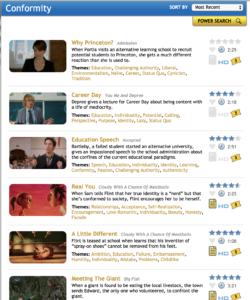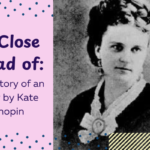** Contact me if you would like Rogers Education Consulting to come to your campus with engaging, evidence-based, and practical professional development **
 Over the past five years or so, there has been a big emphasis on using media in the classroom. If you scour Pinterest for ideas on making inferences, you will find tons of pictures and short Pixar clips that can be used to get students to make inferences. Don’t get me wrong, I do like this idea. Giving students a video clip or a picture that is sure to engage them and asking them to complete a complex task, such as make an inference, will result in students being more successful implementing that same skill while reading. BUT…I want more. The Pixar clips are cute and have a positive message, but let’s face it, they’re not really
Over the past five years or so, there has been a big emphasis on using media in the classroom. If you scour Pinterest for ideas on making inferences, you will find tons of pictures and short Pixar clips that can be used to get students to make inferences. Don’t get me wrong, I do like this idea. Giving students a video clip or a picture that is sure to engage them and asking them to complete a complex task, such as make an inference, will result in students being more successful implementing that same skill while reading. BUT…I want more. The Pixar clips are cute and have a positive message, but let’s face it, they’re not really  complex. It’s a great first step, but I want more for my students.
complex. It’s a great first step, but I want more for my students.
I’ll have to admit here that I am not a big movie buff. I have the attention span of a gnat, so I have seen the first fifteen minutes of A LOT of movies. I usually can’t think of great clips that show themes from the books we are reading, nor do I have any knowledge of what flicks would be great to activate schema. As it turns out, someone else does! On one of my endless Google searches, I found Wing Clips, movie clips that illustrate and inspire. As far as I can tell this is a Christian-based website that has taken movie clips, both animated and not, and organized them into categories. Yes, you can search by scripture, category, and movie title, but my favorite for teaching English is to search by theme! As you can see there is a huge list of themes. Once you click on the theme you are searching for, the movie clips that are associated with the theme will pop up.
With my fifth grade small group, we were reading short stories about conforming and individuality. Our guiding question has been, Is it necessary to conform to society? So, I went to WingClips and clicked on conformity and these movie clips popped up:
You can see that there is a brief synopsis, picture, and other tags for each clip. I personally chose to use the clip from Cloudy with a Chance of Meatballs. It worked really well in my lesson.
Typically, I use clips like these to activate schema and get the students talking before I burden them with a heavy text. For this lesson on conformity, I asked my students to ponder the guiding question. We discussed what it meant to conform…when do we see people conforming in everyday life? When do we see people resisting conformity? What do we personally think on the matter? This proved to be an interesting conversation with the students because automatically they want to say you should never conform and to always be an individual. That is, after all, what they are taught by feel-good animated films and children books. However, we started talking about conforming to the laws of society and the school. It really needed to get their wheels turning and thinking in all directions. As a small group, we made a list of when it’s good to conform and when you should resist conforming.
Then we watched the video clip. I had already started activating their schema, but the clip further activated their prior knowledge. After watching the clip, we discussed whether it was better for the characters to conform or not in this situation. The students reflected in their journals after a long discussion.
Then, they were all ready to dive into the challenging text that we were going to read equipped to discuss and think about conformity on a deeper level because they had a text (movie clip) to make connections to, and they could also connect to themselves.
How do you activate your students’ schema?



Awesome. Thank you.
6th grade English language arts teacher
You’re welcome, Natalie! I hope you have a great year!